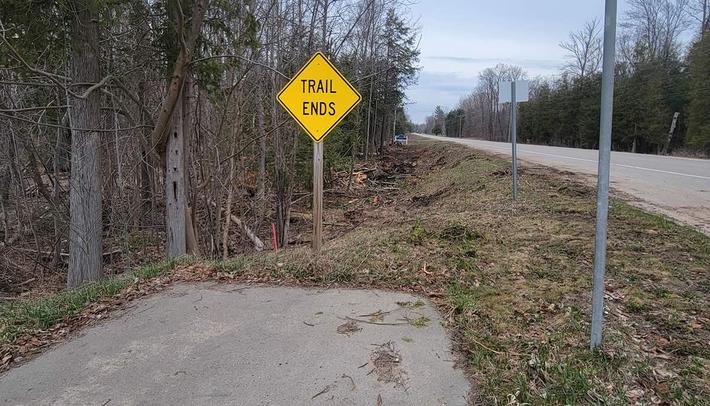Smaller Homes and Zoning Laws
Guest Opinion
By Yarrow Brown | Oct. 14, 2023
According to data from Ryan Kilpatrick with Flywheel consulting, 46 percent of all households would prefer walkable, amenity-rich neighborhoods with smaller homes, smaller lot sizes, and less private green space if it means they can walk to the coffee shop or their kid’s school. Yet less than 5 percent of neighborhoods create amenity-rich housing options in Michigan. Those that do are in such high demand that only the wealthiest residents can afford them.
As our region looks to recruit talent from outside northwest Michigan, walkable neighborhoods or small square footage affordable units are in demand. However, smaller unit sizes are very limited right now due to our extremely low vacancy rate and the barriers to building smaller, less expensive units on pricey real estate. One solution to this is to change zoning to allow smaller unit housing.
Changing zoning can be easier said than done. Many people still come out and oppose zoning changes or projects that bring more density. Many object to these because they will not ensure affordability and fear their way of life will be threatened.
According to many sources, land values and neighborhood amenities play a major role in housing affordability. We know that where there is a lot of demand, land is more expensive and in turn makes housing more expensive.
It’s important to note that density does not determine property values; demand does. We live in a desirable area, one in which we are losing our younger residents and seeing a rise in those who are 65 and older. This is not just northwest Michigan—it is a global trend. How are we going to care for our aging population if we do not have enough affordable housing for those who are able to care for them?
There are some key steps to help bring more affordable housing to our rural communities and streamline the approval process.
First, we must find ways to reduce or eliminate minimum lot widths and arbitrary density limitations. It is recommended to take this step as far as politically feasible where sewer and water are available. We can strive for minimum lot widths of 40 feet or less wherever possible. Reducing related standards like minimum lot area, side yard setbacks, and greenspace requirements to be proportional to the lot width reductions helps, too.
Second, we need to do what we can within the zoning ordinance to reduce construction costs, including removing restrictions for minimum floor area requirements and minimum parking requirements as well as reducing utility connection fees.
Third, we can minimize design costs. Whenever possible, units of government can help to minimize design costs and streamline the approval process. As much as possible, everyone should be abundantly clear about expectations for design up front. Measure twice, design once.
In addition, here are five questions around housing development for every zoning official to ask.
1. What is the average cost of land in the neighborhood I am working on? Understanding this will allow the planning commission and staff to create locations where multi-unit developments or smaller square footage units should go and where to preserve larger lot sizes.
2. What is the average cost of residential construction per square foot in my region? In our region it is almost $300 per square foot to build, not including the pre-approval process and requirements before a project can even break ground. We do not want anyone paying more than 30 percent of their income on their home regardless of what they make. Where sewer/water is present, local communities can often reduce their lot widths by as much as half, doubling the number of new homes built and reducing the cost of land per home.
3. How onerous is our design review process? Can we make it simpler? By asking for a lot of plans, designs, and more upfront, the developer must commit to tens of thousands of dollars before ever knowing if the project can get off the ground. If possible, make it simpler and more cost effective to bring the idea or plan to the commission/staff before an application is made and they must add more cost to the project.
4. How much does a developer have to spend before getting site plan approval? It should not take years to approve a project to build housing. Consider pre-approved plans and decide which housing types fit within a neighborhood and permit them by-right and administratively.
5. Can a developer use all available tools for financing and still satisfy local requirements? The hope is with the help of Housing North and others, the community is poised to provide these tools and incentives. We have many examples to look toward in Frankfort, Traverse City, Cadillac, and Petoskey. We need to make sure we are pairing incentives and subsidies with zoning to achieve affordability across the income spectrum.
Yarrow Brown is the executive director of Housing North, a 10-county housing agency serving northwest Michigan.
Trending

Walking in an Artsy Wonderland
Michigan Legacy Art Park is hosting the “Raindrops” artwork created by Dewey Blocksma and Patricia Innis at th... Read More >>
Seven Takeaways from Local Real Estate Agents for the Spring/Summer Market
The last few years in local real estate have been akin to what one local agent described as the “wild west,” w... Read More >>
Blazing the Boyne City to Charlevoix Trail
We’re getting ever closer to an interconnected northern Michigan thanks to ongoing work on the Boyne City to Charlev... Read More >>


